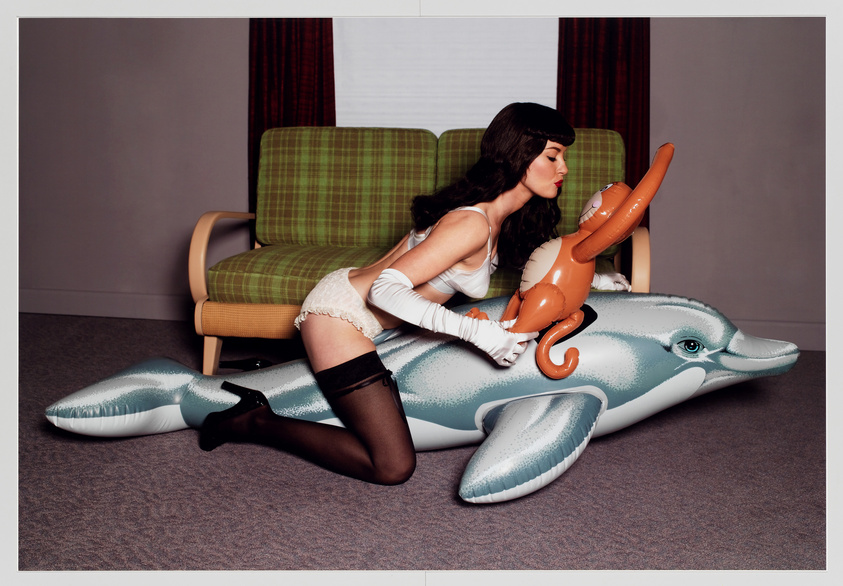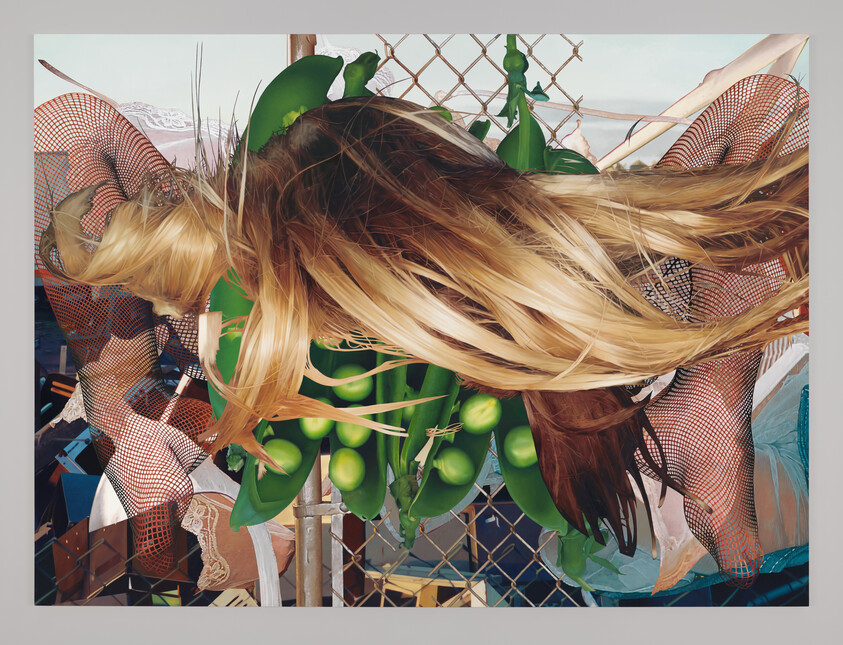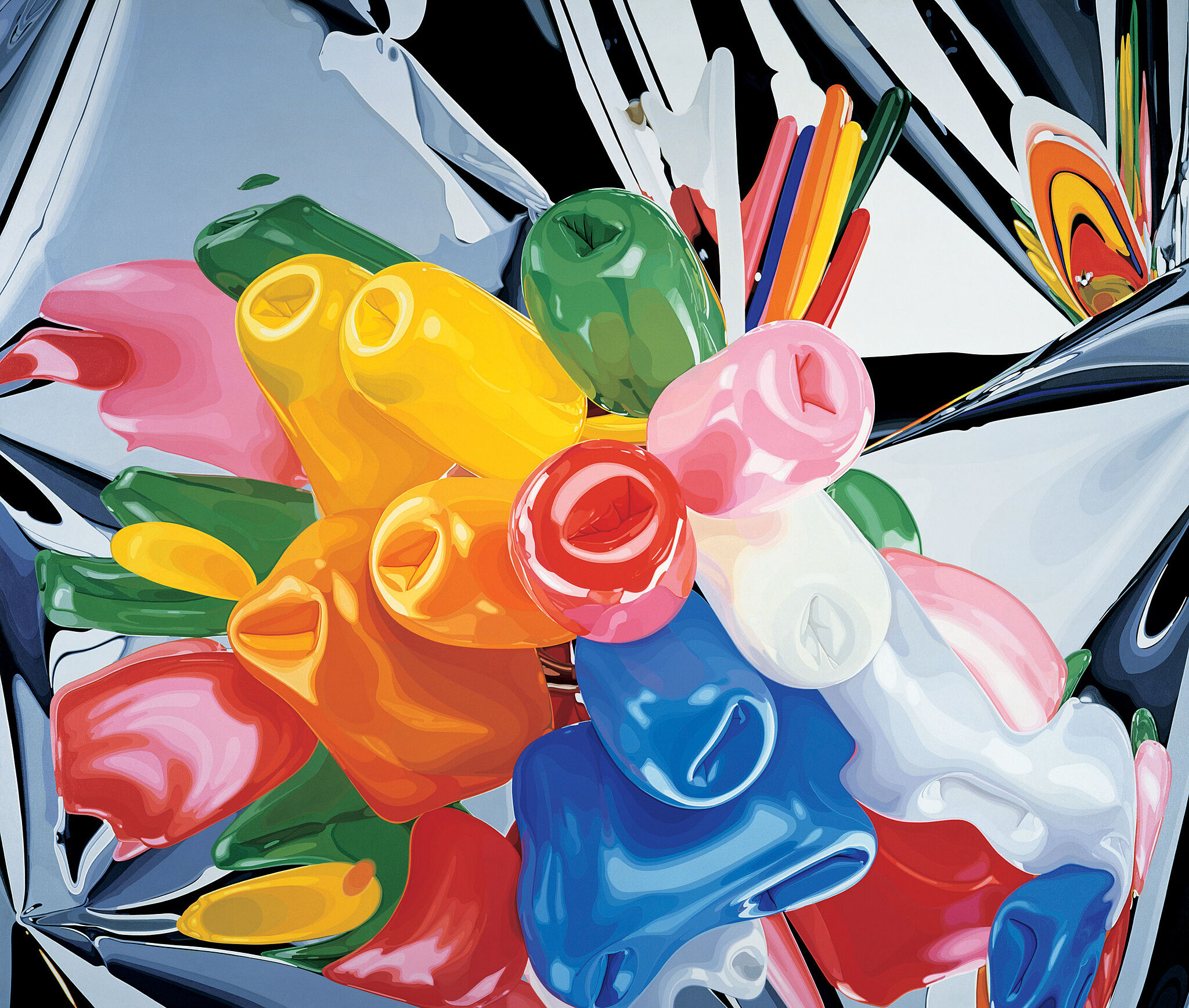Jeff Koons, Junkyard, 2002
June 27, 2014
0:00
Jeff Koons, Junkyard, 2002
0:00
Narrator: In the 1990s, Koons began producing handmade paintings—like this one, Junkyard. The earliest of these works tended to focus on food; increasingly, they mingled images of food and sex.
Scott Rothkopf: What also develops in these paintings, and Junkyard is a good example of that, is an increasingly complex approach to composition. The layers in these paintings become more and more entwined. This is because Koons starts to develop the compositions more directly on the computer using software such as Photoshop where you can drop out parts of an image like the woman's legs that are missing from the fishnet. Where he can create a layering, a playing with transparency of the different layers that's impossible in a cut paper collage.
These paintings for me are not just about the subjects that you see in them, but about a space that starts to feel like the computer space to me. The paintings themselves get more and more precise in terms of the paint handling as you look around this room. They start to emulate less the surface of a handmade picture and more a printout. As you get close to these paintings you see a pixelation that recalls an inkjet print.
I like to think of them not so much as being photorealistic but printer realistic. I think that that's an important aspect that develops through the paintings that you'll see in the rest of the exhibition.



